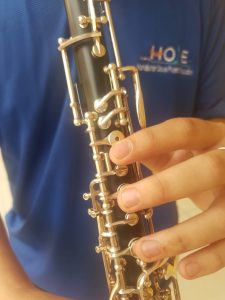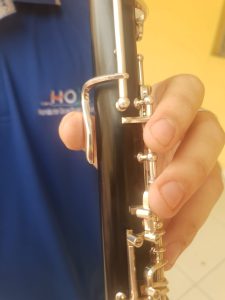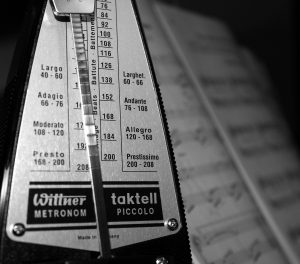How to Practice Scales

Scales provide the means by which we develop technique.
Fingering problems on the oboe focus on the proper use of half-hole and octave keys.


Scales should be practiced slowly and evenly as a basis for fluid technique.
Different patterns of articulation should be used. Arpeggios and octaves should also be played.
A metronome and tuner are essential for both these exercises and vibrato practice.
You could use an online metronome:
METRONOME ONLINE – free online metronome
Tips for practicing Scales:
-
-
-
-
- Practice scales slowly with a single breath, quarter note to 50 on the metronome.
- Also, use the following rhythms: quarter notes, eighth notes, triplets, and sixteenth notes.
-
-
-

-
-
-
-
- Practice scales looking in the mirror to see the position of the hands, fingers, and embouchure.
-
-
-
Recommended methods for Scales:
La Technique du Hautbois: sonority and mechanism, scales by Bleuzet

The scales in the Bleuzet are to be played in a single breath for each scale. Alternating the use of short fingerings with standards for the high notes as long as it sounds in tune and slurred. Always play a crescendo or blow faster air 4 notes before the high note A or G, or the highest note in the exercise. That helps the high notes come out easier and in tune.
Other recommended methods:
-
-
-
-
- Daily Scales for Oboe by Whitney Tustin.
- Preliminary exercises for oboe by Scozzi R.
- Daily Exercises for Oboe by Jettl
-
-
-
Remember to always practice very slowly with the metronome until you play each scale exercise as closely as possible, alternating short and standard fingerings.


You really make it appear so easy together with your presentation however
I in finding this topic to be really one thing that I believe I’d by no means understand.
It seems too complex and very wide for me. I’m having a
look ahead for your next publish, I will try to get
the hold of it! Escape room lista
I recommend to look for the answer to your question in google.com
I think, that you are mistaken. I can defend the position. Write to me in PM, we will communicate.
Very good message
I apologise, but it not absolutely approaches me. Perhaps there are still variants?
https://independent.academia.edu/QuinntonPerry
Thanks for sharing your thoughts on is fxgt legit. Regards
You’ve managed to turn simple words into something profound, making this more than just a read — it’s an experience.